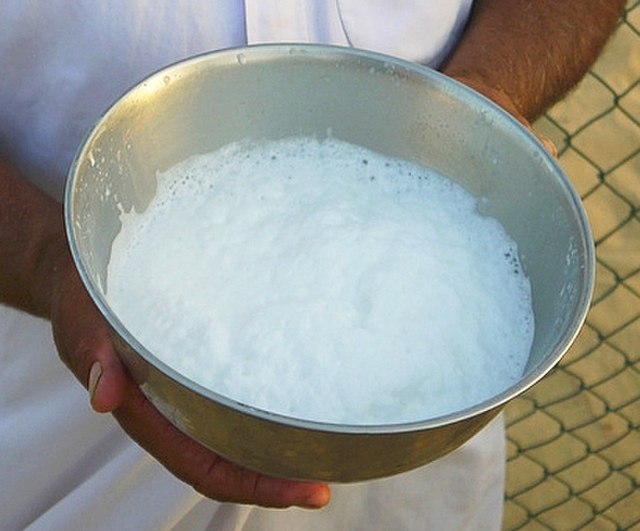Home processing of camels’ milk is turning a page for Somalia courtesy of pioneer yogurt plants supplying supermarkets in Mogadishu.
According to the Associated Press on August 3, 2025, Beder Camel Farm has created the first niche yogurt dairy in the country.
Hitherto, milk from the humped animals rarely trickled out to cold storage retailers due to a low national processing profile.
With a camel herd of 7 million head, Somalia has a distribution ratio of 1 camel to every 2-3 persons, as of 2022.
Lately, rearing this large herd for merely live sales or milk subsistence has been giving way to raising them for commercial milk processing. According to the Somali Times, the Horn of Africa nation together with Kenya already accounts for 64% of the worldwide camel’s milk sales.
Meteoric Price
The journal further reports this special milk can be quite lucrative, as it rakes in $30 a liter (l), as of 2020.
Comparably, cow’s milk, which is also popular in the East African country costs a fraction of that, starting at $1.00/l.
Price stability in especially Mogadishu could favor ventures keen to exploit a thriving consumer market.
Indeed, a June 2024 price report by WFP showed that weekly camel’s milk rates in Somalia’s capital more or less remained stable. This is even as other regions recorded between 1 and 9% in fluctuations depending on the supply situation.
Cashing in on Health
Mogadishu’s retail premise stands strong because urbanites are increasingly aware of the rich vitamin and gut-friendly profile of this yogurt.
With such potential, passionate entrepreneurs are expanding the product range that now features the trailblazing “Beder yogurt.”
According to the management at Beder, the company so far controls 40% of the market portion of processed camel’s milk nationwide.
Sales in Mogadishu alone have garnered enough edge to help the processor branch out to other pastoralist regions. The aim is to double daily milk productivity on remote farms to 10 liters per camel – which is Beder’s current peak capacity.
With homemade yogurt penetrating local grocers, Somalia could soon rival the Middle East’s well-heeled camels’ milk industry, which even makes cosmetics. The below statistics examine the reigning status of the home sector in anticipation of a similar industrial expansion.
Somalia Camels’ Milk Statistics
Somalia is the world’s biggest camel-rearing nation, with 7 million head of the nomadic animals. It is also one of the top 2 camel milk sales’ grossers, worldwide. As of 2023, production sales grossed $634.83 million, second only to Kenya’s $703.87 million, according to Report Linker. The two nations together represent 64% of the global supply of the vitamin C-rich milk. Other key producers include Mali, which grossed $180.11 million in 2023, Ethiopia at $171.83 million and Saudi Arabia at $88.33 million.
Is Somalia the top producer of camel’s milk?
Although Somalia leads in camel count globally and is second in niche milk returns, it lags in camel’s milk production. A 2025 estimate by EES Feed put it at position 3 with 300,000 tonnes. This was behind Saudi Arabia and the UAE at 400,000 and 500,000 tonnes, respectively. Kenya and India rounded up the top 5 with 250,000 and 200,000 tonnes, accordingly.
Is camel’s milk expensive?
Somalia enjoys lucrative rates of camel’s milk, with prices in 2020 clocking $30 a liter. These impressive perks owe to the fact that worldwide camel’s milk output is only a trickle. Its supply averages 3 million kiloliters per year while that of cow’s milk rounds up to 600 million kiloliters.
What is the price tag of a camel in Somalia?
According to Shabelle Agro Co., a camel in Somalia costs $1,250 to 2,000, for a healthy, mature specimen.
Who are the “who is whos” of camel’s milk exports in Somalia?
Several companies have made it as the biggest camel’s milk export firms in Somalia. Per ESS Feed, they include Somalian Camel Dairy Co., which earns about $5 million annually in exports. In the top four are Desert Farms Somalia ($3.5 million in average annual earnings) and Horn of Africa Camel Milk Ltd ($2.8 million).
